During our extended-temporary closure, we're bringing exhibits out into the community. Visit our sister institutions to see these ASM exhibits:
A SPECTACULAR DISCOVERY
A window exhibit at the Bisbee Restoration Museum
Opening February 15, 2025 for an initial 6-month run.
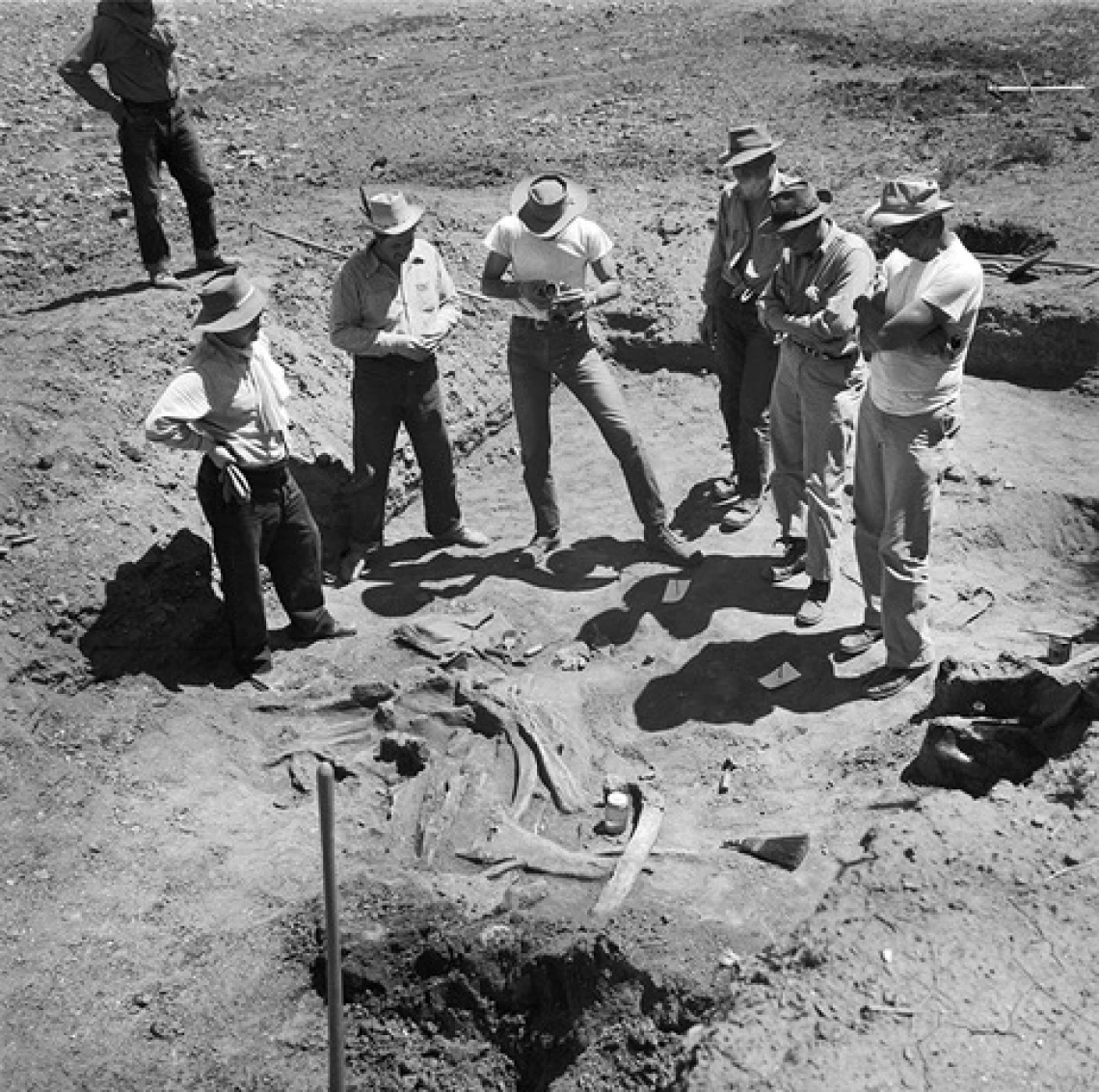
In 1951, Dr. Emil W. Haury, Director of the Arizona State Museum, received an exciting call. Ranchers near Naco, Arizona found two spear points near huge bones eroding out of a wash. Dr. Haury, with a team of University of Arizona faculty and students, rushed to investigate.
What they excavated was a one-of-a-kind discovery: a mammoth killed by Clovis hunters over 13,000 years ago. Archaeologists speculate that the mammoth (Mammuthus (Parelephas) columbi) actually escaped the attack but was mortally wounded by the spear points excavated from between its ribs and vertebrae. When it died, it fell on a sandbar next to a stream.
See large photographs of the excavation, a diorama of mammoth hunting and butchering, and replica Clovis points.
Bisbee Restoration Museum
37 Main Street
Bisbee, AZ 85603
https://www.bisbeerestorationmuseum.org/
Special thanks to ASM Director's Council Member Doug Dunn for initiating the installation and for his financial support of it.
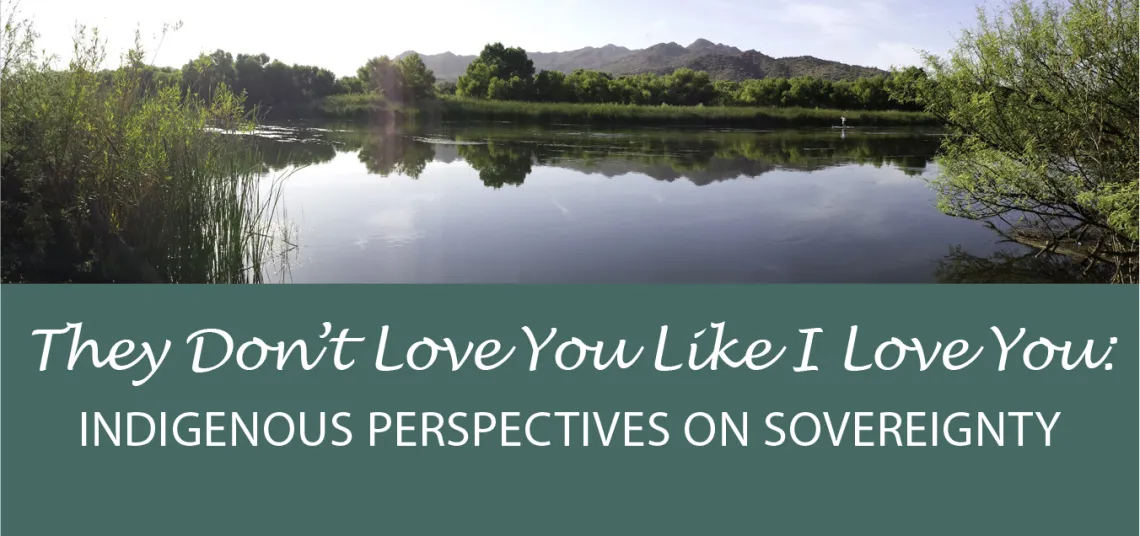
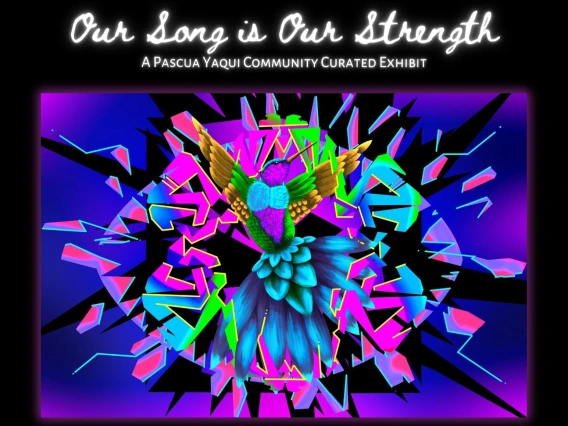
Our Song is Our Strength was curated by members of the Pascua Yaqui community
Amerind Museum
2100 N. Amerind Rd.
Dragoon, AZ 85609
October 19, 2024 through August 2025.
See the online version of this exhibit.

Su:dagi/Shu:thag: Rekindling Our Connections, was curated by members of the Gila River and Salt River communities
Opening soon at
S'edav Va'aki Museum
Phoenix, AZ
See the online version of this exhibit.
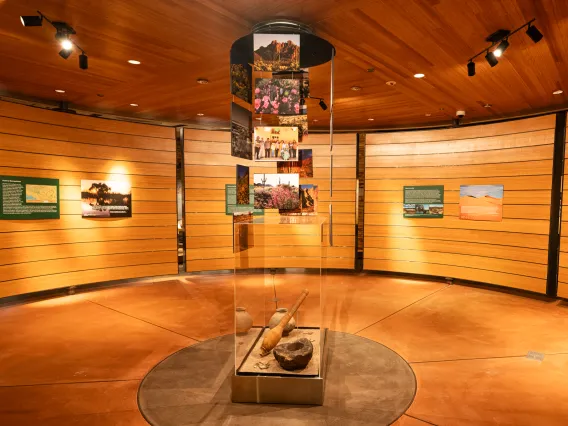
Invisible No More! was curated by members of the Hia-Ced Oʼodham community
New exhibit location TBA.
See the online version of this exhibit.
Exhibit Synopses and Title Explanations
Watch this introductory video.
This exhibit series, They Don’t Love You Like I Love You: Indigenous Perspectives on Sovereignty, developed out of community curator group discussions with representation from all five Native Nations about community and the idea of sovereignty. Each curator agreed that there is no better authority on how to care for the people, homelands, culture and language than their own. The idea of sovereignty coming from within, and in the face of outside forces/decisions, was an underlaying theme in each exhibit. At the opening reception at Himdag Ki:, community curator April Ignacio addressed the crowd, “This exhibit is a love letter to you, our hajun (family/relatives).” This sentiment was shared at each of the exhibit openings.
- Gila River and Salt River are known as Akimel O’odham, or River people. Their collaborative exhibit, Su:dagi/Shu:thag: Rekindling Our Connections, focuses on the loss of their water resources due to encroachment of settlements and city use. Through this loss, all other areas of their cultural community were affected. Over the last 100 years they have been at the forefront of the water rights litigation, and cultural reparations while turning to each other to lead the way. The exhibit was conceived as a message to their youth that there is strength in traditional knowledge, which should be harnessed to create a healthy future.
- Pascua Yaqui’s exhibit, Our Song Is Our Strength, highlights the resilience and determination of the Yaqui people from their homelands near Rio Yaqui in Mexico through government enslavement and persecution, and their exodus north into the United States. As a matter of safety, their culture was kept secret until the 1970s when after gaining federal recognition they were allowed to freely practice, celebrate and revitalize their traditions north of the border. This exhibit uses original artworks from Pascua Yaqui artists to highlight issues such as United States/Mexico border wall, land and water protectors, Violence Against Women Act (VAWA), Missing and Murdered Indigenous Women (MMIW), and community pride.
- Hia-Ced Hemajkam exhibit, Invisible NO MORE!, is in response to the fight for federal recognition. In early 1900s the Hia-Ced O’odham were overlooked as a dying community and denied access to federal recognition, land trust, and other protections and support. Their community has been fighting for federal recognition for over four decades. This exhibit details the process they are taking to achieve federal recognition, and how this decision will support their cultural reparations and future as a distinct tribe.
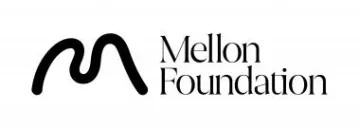

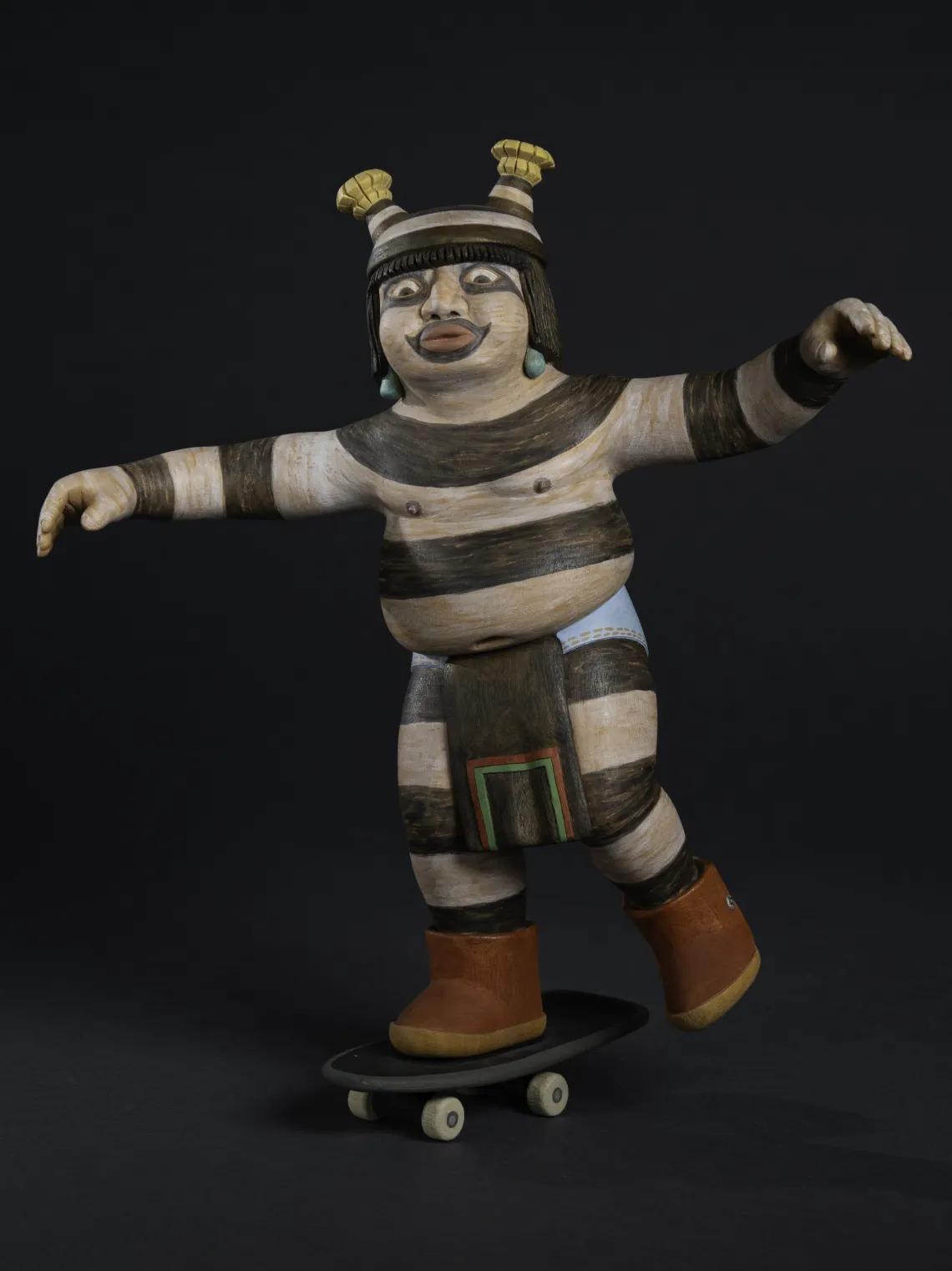
Watch this space for
your next opportunity
to catch this pop-up exhibit:

For many Indigenous communities, adopting and adapting car culture is a way of expressing heritage and contemporary experiences. Cars, skateboards, motorcycles, bicycles, and even shoes become canvases, often incorporating traditional symbols, colors, and patterns. This unique expression of self is a dynamic and evolving cultural landscape.
This exhibit includes photographs and artwork by Indigenous artists focusing on Indigenous lowriders and their cars, skateboards, motorcycles, and bicycles. Eleven die-cast model cars painted by Native artists will also be on display. Related activities with Indigenous car and motorcycle club members, artists, and curators will be offered.
This exhibit is presented by

Photo:
Hano clown skater by Herbert Talahaftewa, Hopi
ASM 2008-282-11





